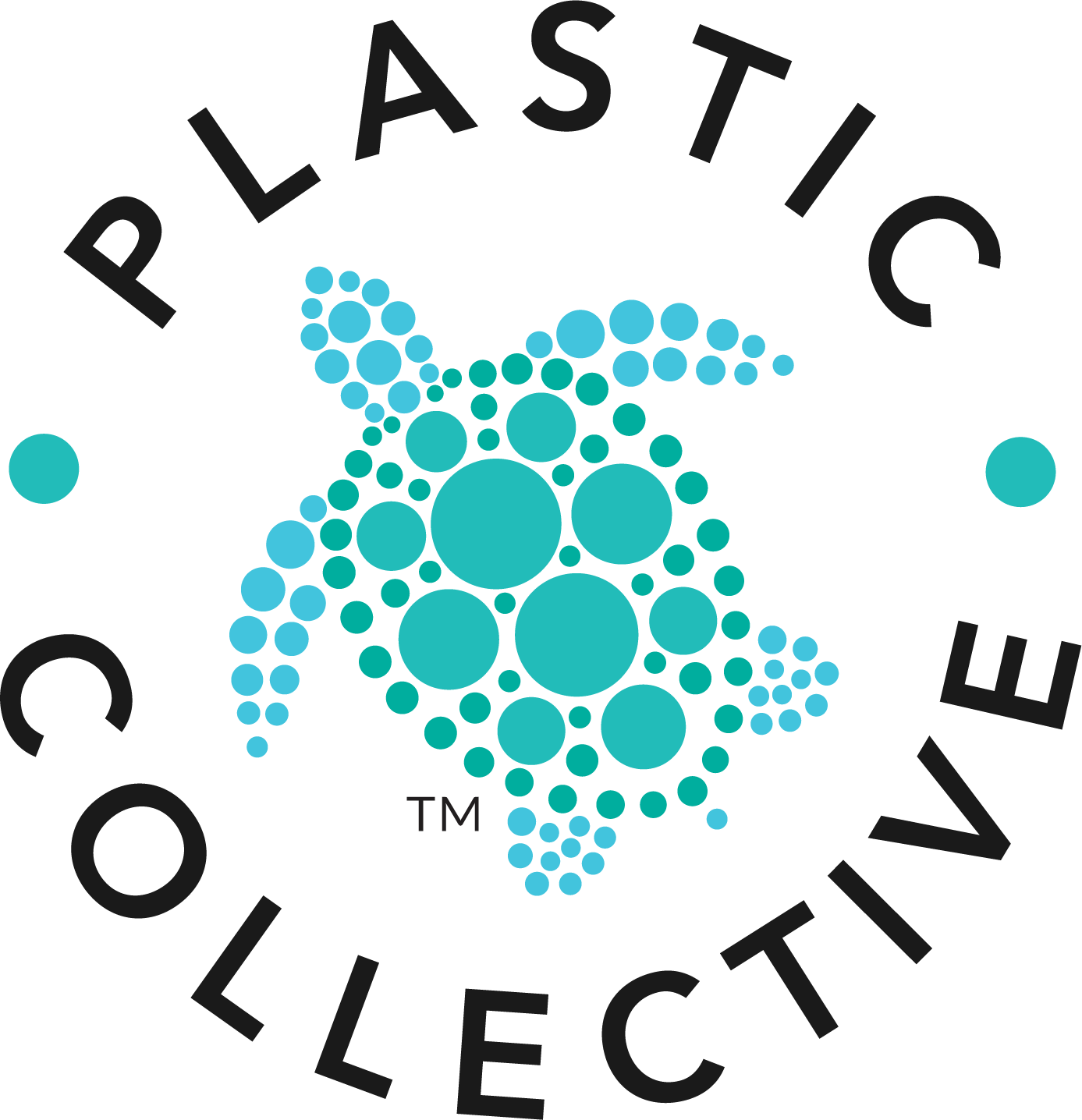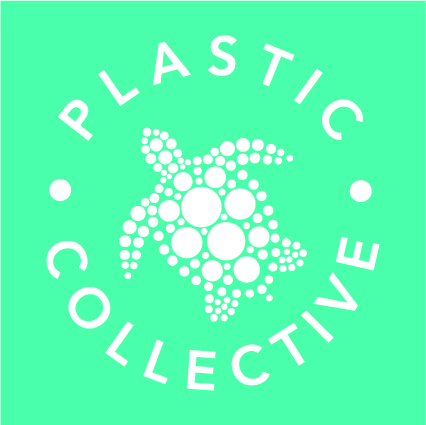Types of Plastic: Guide to Different Plastic Types

Plastics are an extremely useful and flexible material. Because of this we often use plastics in our daily lives without giving them a second thought.
One of the things that is overlooked when it comes to plastic types (although general awareness is growing) is that not all plastics are created equal when it comes to the environment. This means that some plastic types are responsible for more of the environmental damage that is happening in the world than others.
Knowing how to identify the different plastic types is important for consumers since it is then possible to either avoid certain types of plastics or be able to recycle them more effectively.
A sea change is required when it comes to our relationship with plastic and how we think about the material. Often, we think of plastic as either waste or refuge, but it is in fact a resource that can often be reused time and time again.
As a case in point, the inventor of the plastic bag, Sten Gustaf Thulin didn’t think of the item as single use, instead he used to carry around the bag in his pocket and use it until it wore out. Sadly, over time society started thinking of plastic bags as disposable items and only recently with changes to legislation that we now reuse plastic bags when we do our shopping.
In this guide, we’ll explore some of the different types of plastics and delve into the common and popular plastic types you should know about.
Two Major Plastic Types – Thermosets and Thermoplastics
There are two major plastic types that you should be aware of. These are classified as thermoplastics and thermosets.
When we examine the origins of where the name plastic comes from, we learn that the word derives from the Latin word ‘plasticus’ which broadly means, ‘capable of shaping or molding a substance’. The Greek word ‘Plastikos’ also means something similar, ‘able to be molded’.
However, in reality not all plastic can be ‘remolded’, and this brings us to one of the main differences between thermoset plastics and thermoplastics, and that is how easily the materials can be recycled.
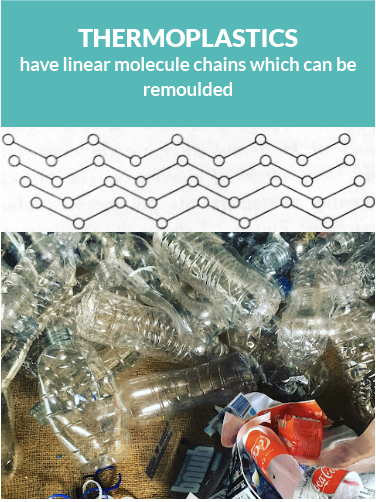
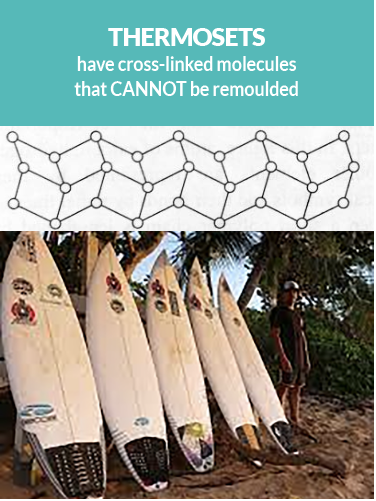
Thermoplastics, typically can be easily recycled since they can be melted and reshaped into new products. The good news is that the majority of the plastic that is manufactured is classified as a thermoplastic (80%) which means that theoretically it can be re-used. Sadly, in practice this is not typically the case.
All thermoplastics (apart from PVC – which damages machinery) can go through the pyrolysis process to recycle the material. Pyrolysis involves heating the material at 400deg+ with no oxygen to break it down back into original components.
However, this is not so easy for thermoset plastics since they retain their shape once they have initially been molded. These plastics cannot easily be melted and reshaped, so the recycling process for these types of plastics is more involved. Often this means grinding the thermoset materials into smaller fragments so that the smaller shards can then be reused as a component in the manufacturer of new materials.
This doesn’t necessarily mean that thermoset plastics are all bad – since this type of plastic is often used to manufacture products and goods with a long life.
Unfortunately, the problem with thermoset (and all) plastics relates to how humans have moved away from the ‘make do and mend’ philosophy, towards a ‘throw away and replace’ society. This means that the difficult-to-recycle thermoset plastics are often discarded well before their natural end-of-life cycle is complete due to the allure, of having the latest and best gadget or device.
Universal Recycling Symbol
The Universal Recycling Symbol is an image that most of us are familiar with. The origins of this symbol came from an art competition to coincide with World Earth Day, won by a student (Gary Anderson) from the University of Southern California back in 1969. The symbol itself is non-trademarked and is available for use by all in the public domain.
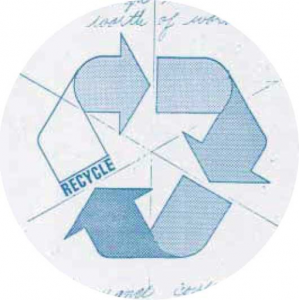
When we look at plastic packaging we can often see this universal symbol is printed on the material, and in many countries around the world you might also see a code number which is designed specifically to tell you the type of plastic that you’re dealing with, and how you can or cannot recycle it.
Plastic Recycling Codes
Our glossary covers some of the more common plastics and some of the less well-known types of plastics, including their properties, and their uses.
Understanding a little bit about the different plastic types means that you can make a more informed choice as to the types of products and services you use and buy.
To simplify this guide we’ve categorize plastics by the plastic recycling code that they fall within.
In simple terms, code 1, 2 and 5 are easy to recycle so if you are shopping and see one of these recycling codes there is a good chance you can recycle plastics that fall into these categories.
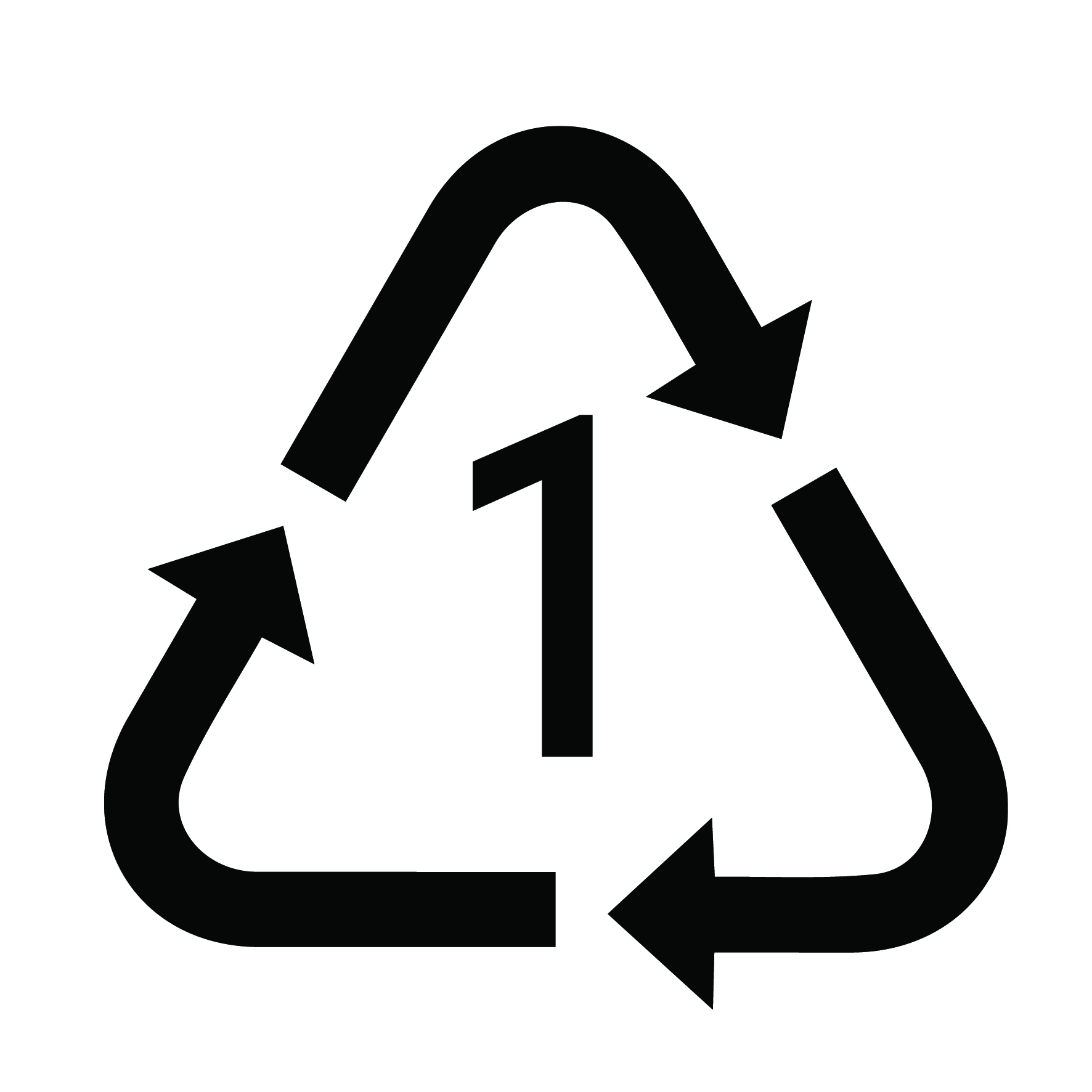
#1 – PET Polyethylene terephthalate
Polyethylene Terephthalate (PET, PETE, PETG, or PET-G) – PET Plastic – this plastic is a form of polyester. PET has many uses, from plastic bags to plastic trays. However, the most popular applications are plastic drink bottles such as water bottles, cooking oil bottles, and soda bottles.
PET bottles are used worldwide and are often manufactured as single-use items, making this type of plastic problematic for the environment since plastic bottles are one of the worst offenders for plastic pollution.
While PET plastics can be recycled, the problem with this type of plastic (along with many other forms) is that it is often not recycled and either dumped in landfills or discarded in the environment and the ocean.
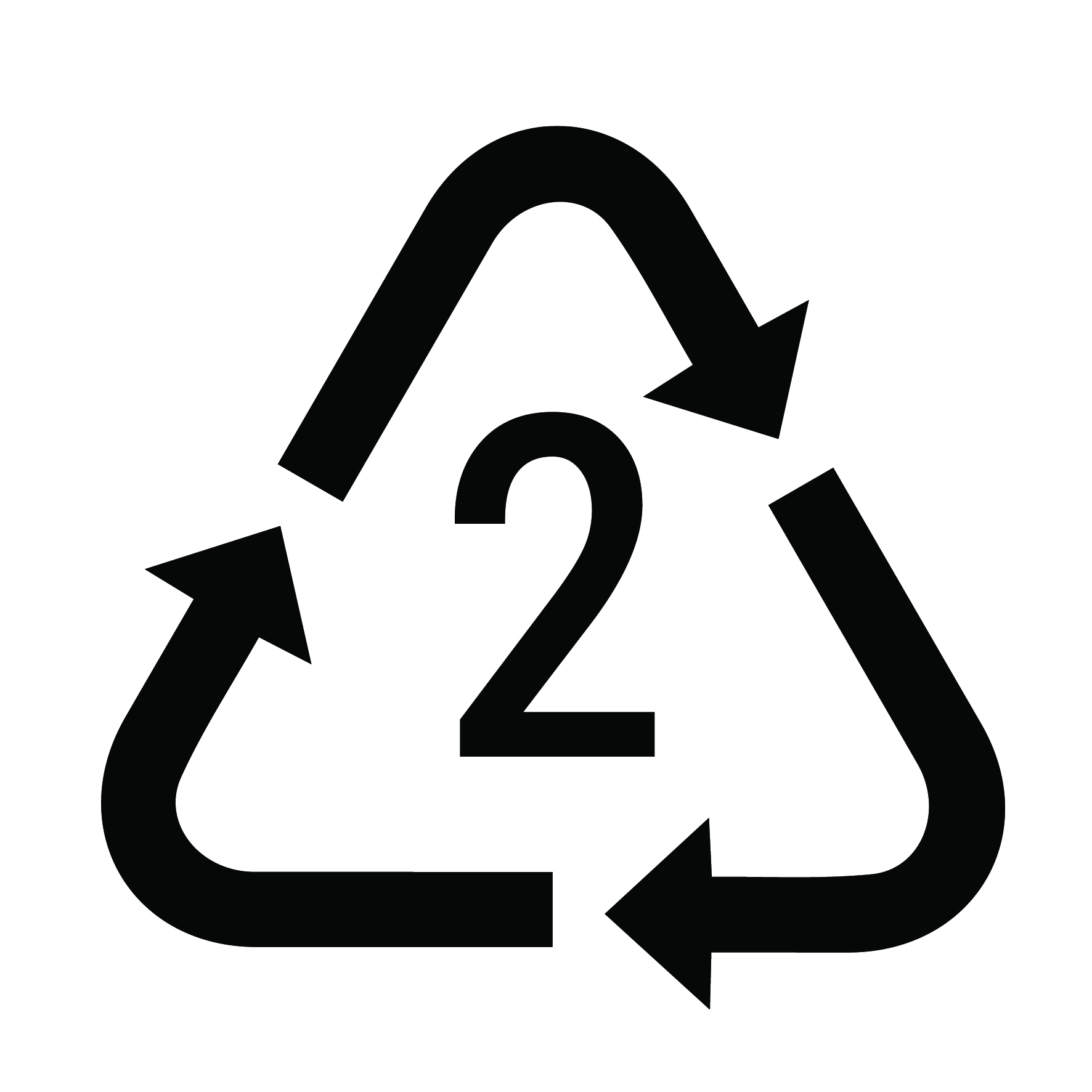
#2 – HDPE – High-density polyethylene
High-Density Polyethylene (HDPE) – HDPE plastics have a high strength-to-density ratio, making them useful for making plastic bottles such as shampoo bottles and other types of chemical containers. HDPE is also used to make plastic pipes where chemical resistance is needed.
Plastic lumber is sometimes made of HDPE, although lumber can also be made from other plastic types. HDPE is commonly recycled and is typically shredded and melted to create a refined polymer that can be used to make new products.
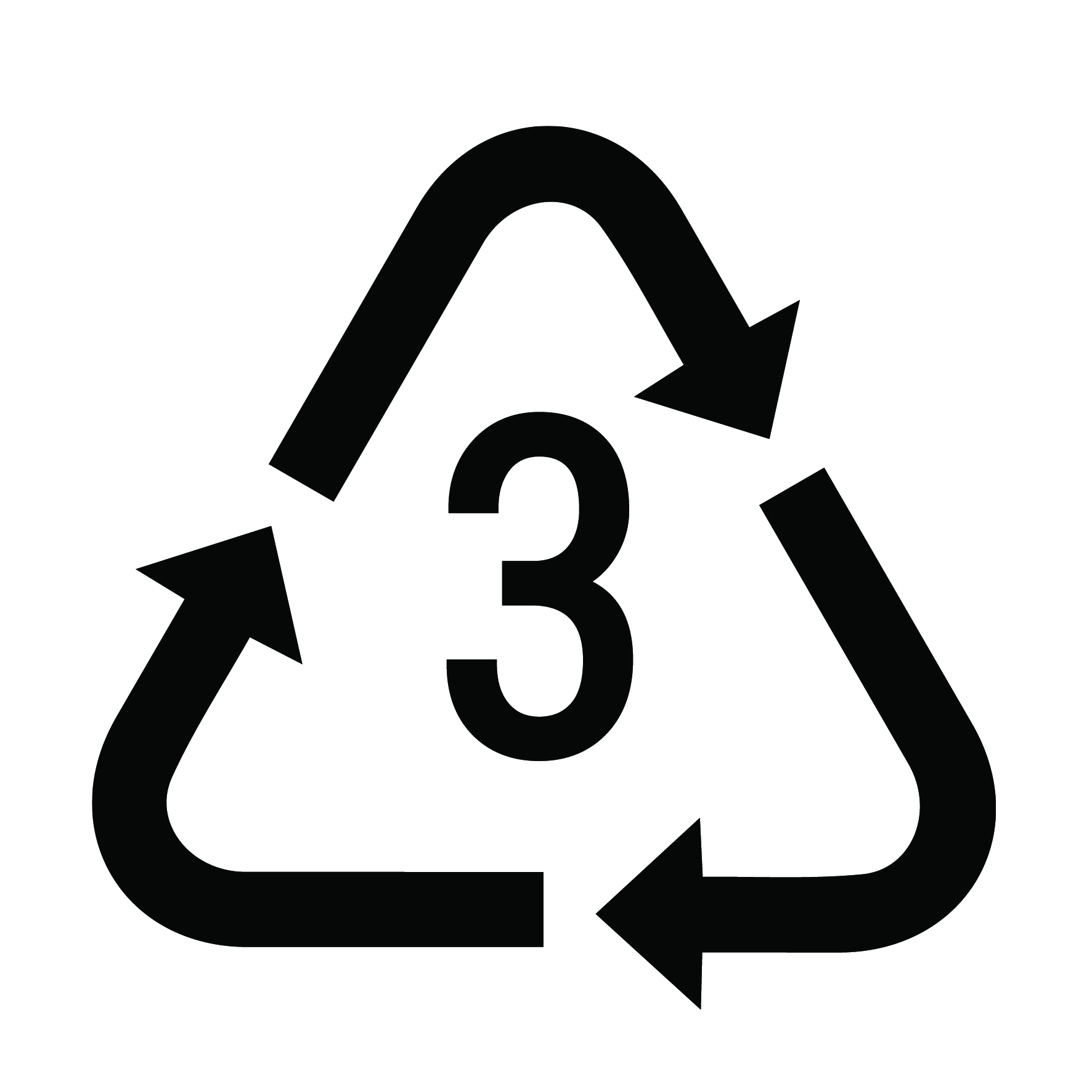
#3 – PVC – Polyvinyl chloride
Polyvinyl Chloride (PVC) – PVC Plastic – PVC is a well-known plastic type with many uses. As the name Polyvinyl Chloride suggests, one use is for vinyl records. However, you’ll find PVC everywhere, from building and roofing materials to drainage pipes, floor tiles, and medical equipment.
PVC is typically a long-lasting plastic that is reused but has some single-use applications, such as flexible tubing and containers used in medical situations.
One of the negative aspects of PVC is disposing it. When it is burnt it releases chlorine gas which can have significant health implications that could lead to death if inhale.
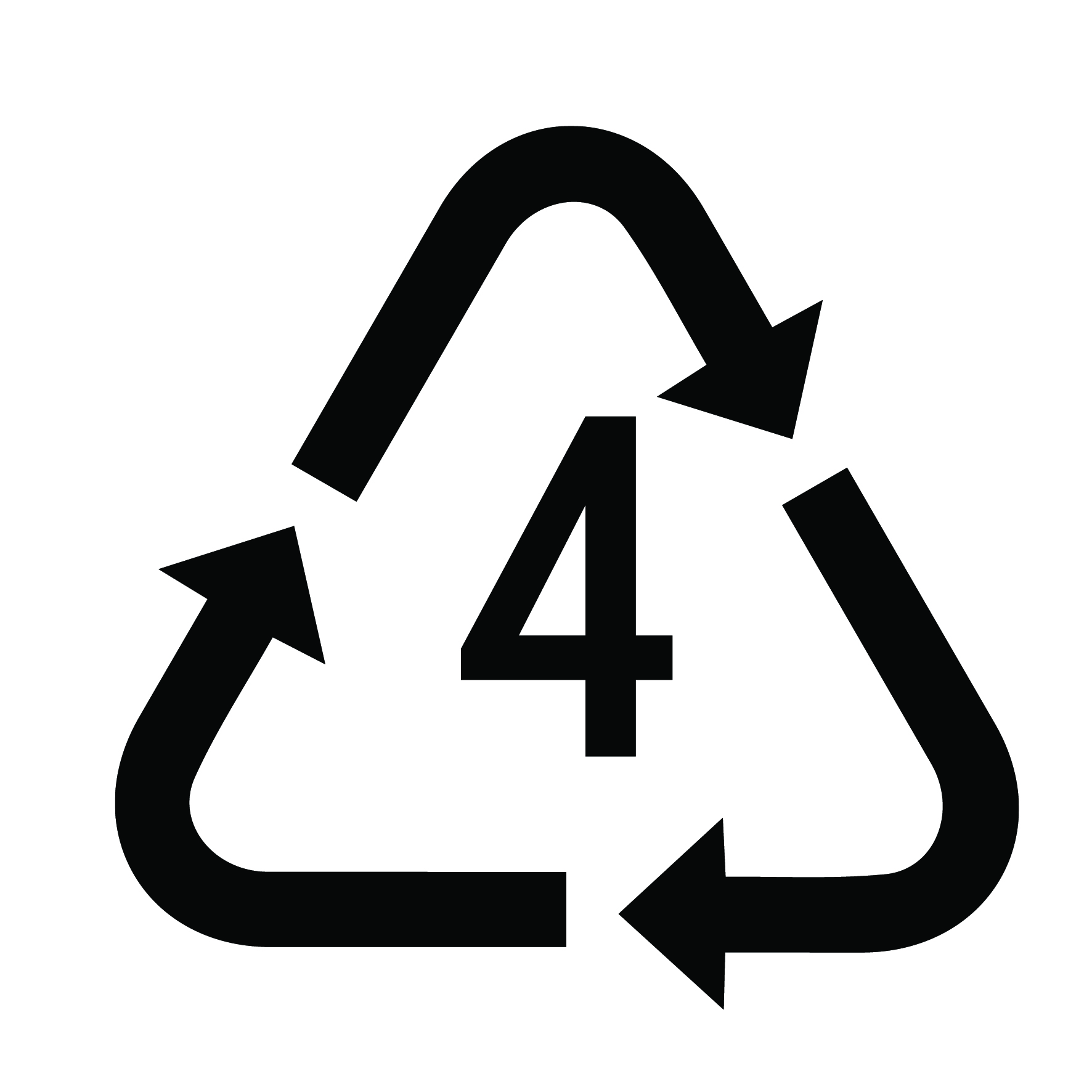
#4 – LDPE – Low-density polyethylene
Low-Density Polyethylene – LDPE / PE-LD – LDPE is a plastic nearly everyone has used. It is commonly used to make grocery bags, liners, plastic wraps, cartons such as juice and milk jugs, and plastic bags.
LDPE typically falls into the single-use category since the food industry often uses it as packaging. While LDPE is a 100% recyclable plastic, the problem is that it is not recycled as often as it should be, so the reuse of the plastic is much less than it could and should be.
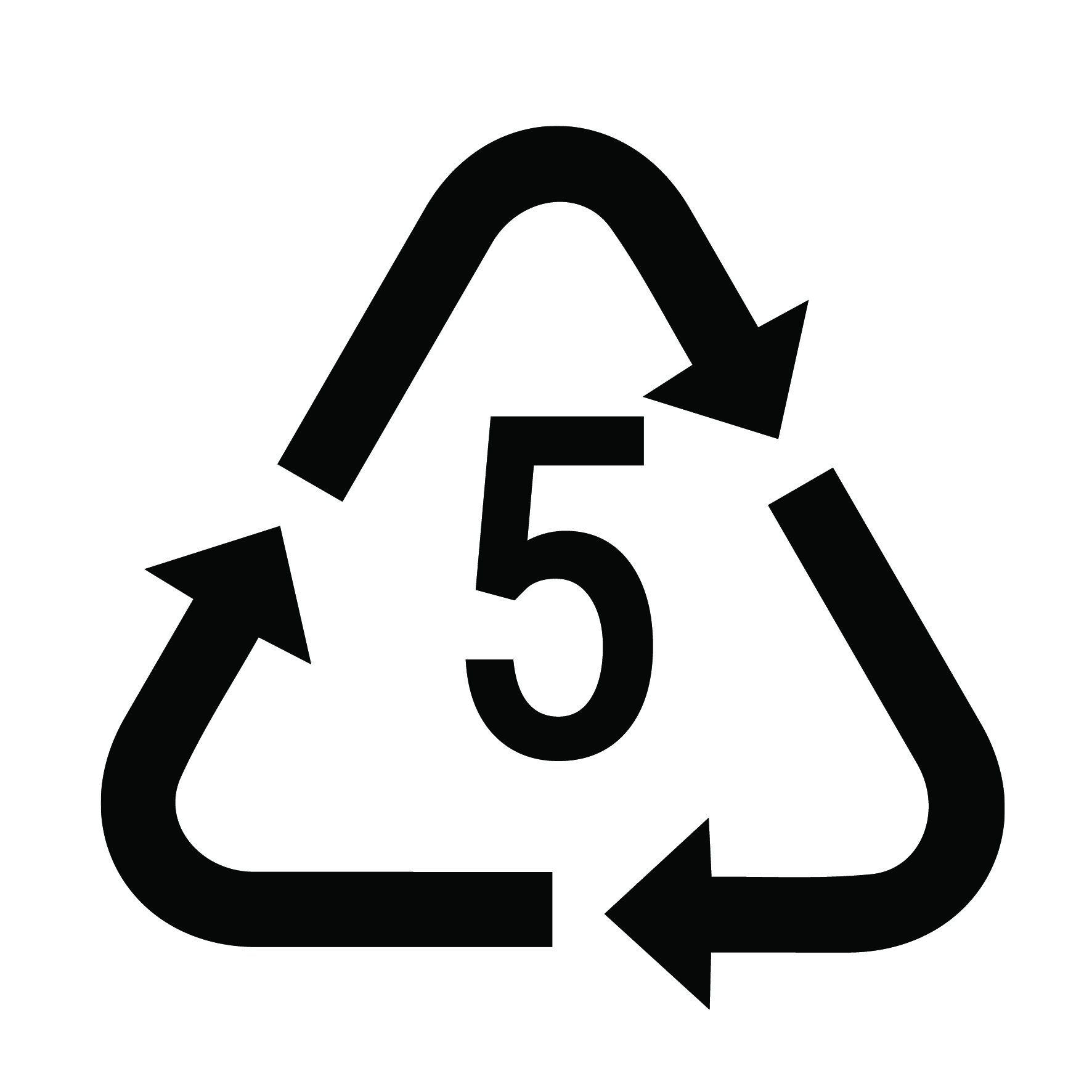
#5 – PP – Polypropylene
Polypropylene (PP) – This plastic is a semi-crystalline thermoplastic with slightly more rigidity than polythene. It’s commonly used in the food and beverage industry for packaging and single-use items such as margarine and butter tubs, straws, or cutlery. However, this plastic can also be used for things such as machine parts and other consumer goods such as plastic containers that can be used for storage and even things like baby bottles.
PP can be recycled and turned into plastic pellets for new goods. However, this material is not always recycled as it is a thermoplastic and is dependent on the local services offered.
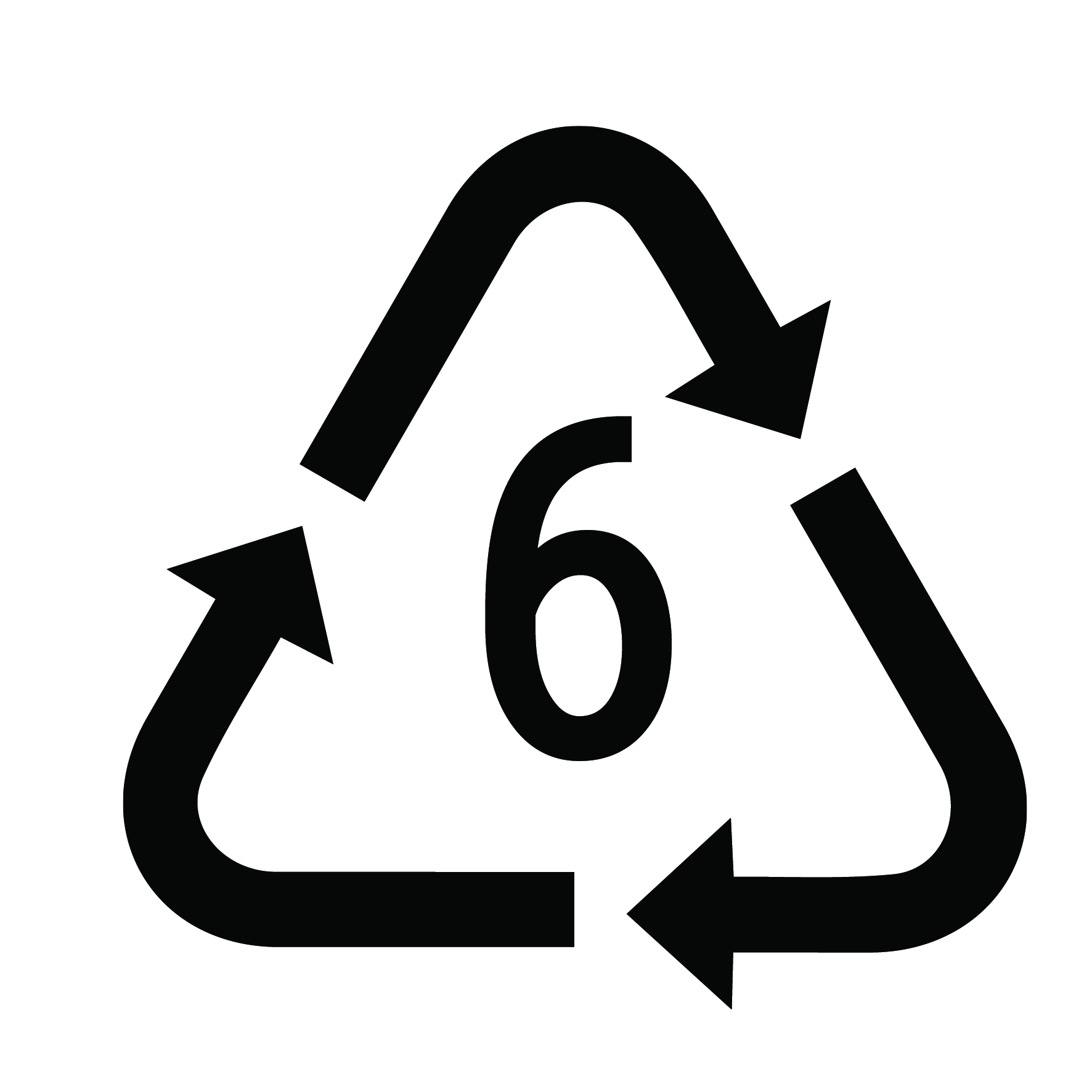
#6 – PS – Polystyrene
Polystyrene (PS) – (Styrofoam is a brand name) – Polystyrene has many uses. Perhaps the most well-known is as packing, including packing peanuts. Egg cartons can be made of Polystyrene but are now often made of cardboard or pulp instead.
PS is typically used as a ‘rigid plastic’ such as coffee lids, buildings components such as insulation or EPS (Expanded Polystyrene) and Styrofoam (extruded). These are made from 96%+ Carbon Dioxide and 4% Polystyrene. This is a problematic material due to the way it degrades into smaller pieces or tiny plastic balls.
Most often PS is commonly found as a packaging material in boxes to help protect items from being damaged when shipped.
Polystyrene is often used in single-use applications and is not widely recycled, so it can be problematic for the environment as it easily breaks down into microplastics.
Something that isn’t well known generally about Polystyrene is that if you heat this material up to 70 degrees it starts to release styrene which is known to cause cancer. Less so recently, but this material was often used in coffee cups and lids.
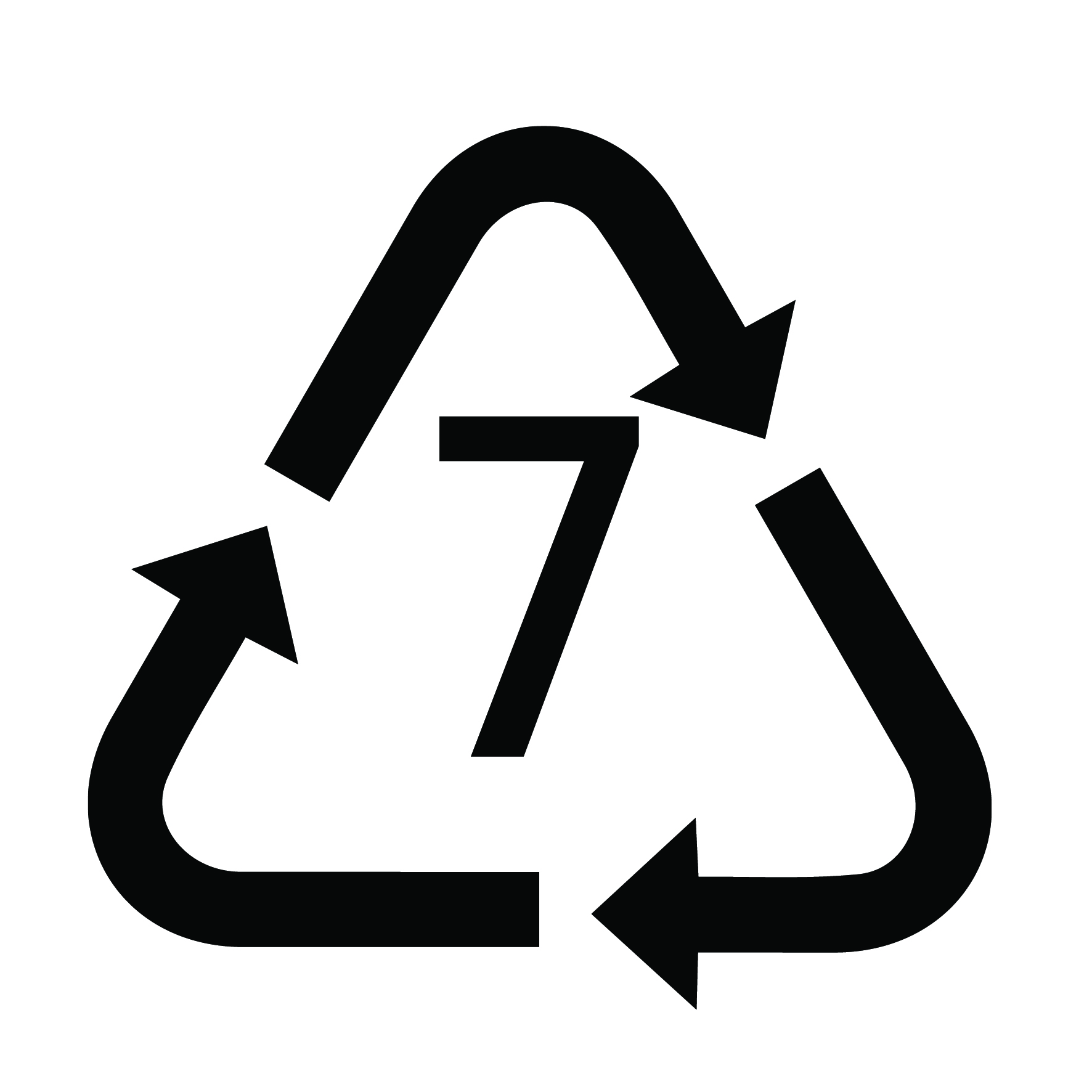
#7 – O (Other) All other plastics
Acrylic (Polymethyl methacrylate or PMMA) – Acrylic is the common name for PMMA. It is often used as a replacement for glass since it is a transparent plastic. Acrylic resin is used in acrylic paint. One use for acrylic that can be problematic depending on their disposal is acrylic nails, which are sometimes flushed down the toilet, meaning they end up in our waterways.
Polylactic acid (PLA / poly or polylactide) – PLA is a type of thermoplastic polyester (see polyester for more information). PLA is a bioplastic made from fermented plant starch. This material is used to make plastic bottles, PLA plastic bags, and plastic film. This type of plastic, since it is biodegradable and degrades at quite a fast pace, means it has quite a lot of useful medical applications.
While this Poly is classified as biodegradable it needs specialist facilities to process it and recycle the material, meaning it is unlikely to be regularly reused.
#ABS – Acrylonitrile butadiene styrene
Acrylonitrile Butadiene Styrene (ABS) – ABS is a common type of plastic known for its toughness and impact resistance. It’s often used in automotive parts, enclosures, toys such as famed building bricks, and other consumer products that need strong, light materials in their construction.
There is some opportunity to recycle ABS plastics as some facilities are available, especially for commercial enterprises.
#PA – Polyamide (Nylon)
Polyamide (PA 66) and (PA 6) commonly referred to as Nylon – PA is commonly made into sheets or tubes and it is classed as a thermoplastic with the attributes of having a low density, high thermal stability and decent chemical resistances. Typically, PA is used in injection molding to create small parts, that are often used as a metal replacement (such as gears and bearings).
Other Common Plastics Types
Polyphthalamide (PPA) – PPA is a thermoplastic synthetic resin subset from the nylon family. It has many uses in the industrial marketplace and is often used as a metal replacement. It is common to find gas and oil pipes made of Polyphthalamide. Toothbrush bristles are another use for this material. Since this material is a thermoplastic, it is possible to recycle it.
Polyurethane (PUR) – Typical uses for polyurethane are foam products and insulation. It is commonly found in seating and cushioning as both soft foam and as rigid foams.
Foam seating is not the only use of polyurethane; it can also be used for gaskets and bushing found in car suspension. Generally speaking, polyurethane isn’t recycled and will normally just end up in landfills. However, it is possible to reuse and recycle polyurethane foam in certain cases. Sadly, this is not a common practice.
Polytetrafluoroethylene (PTFE or Teflon is a brand name variant) – PTFE is a very flexible material with many uses. It is known for its chemical resistance and properties, making it an ideal material for gaskets and seals.
Teflon is a brand name widely known by the general public, often with the association as a non-stick coating for frying pans and cooking materials. While this material can be recycled (to a degree), it is not often reused.
Plastic Glossary of Related Topics
Biodegradable plastics / Bioplastics – The first thing to note is that bioplastics and biodegradable plastics are not strictly the same. Bioplastics are plastics made from renewable sources and substances other than petroleum and fossil fuels, so they are considered a more sustainable plastic; however, just because they are classified as bioplastic doesn’t mean they are biodegradable.
Bioplastics – basically means what the material is made from, i.e. renewable materials – such as corn starch, algae, or vegetable oils.
Alternatively, biodegradable plastics are designed to biodegrade much quicker than traditional plastics might. The problem with them is that while they are often made from bioplastics, they can also be made from fossil fuels and petroleum, meaning they are not necessarily sustainable. This means that these types of plastics may still end up creating problematic microplastics but just at a faster scale.
Biodegradable plastics are typically not compostable, but bioplastics may be compostable depending on what they are made from (for instance, plant-based materials).
Biodegradable or compostable means what happens to the material at the end of its life. There are a few different ways and mechanisms in which a material may degrade. For example: Thermodegradable means that it will degrade when heat is applied to the material. Alternatively, biodegradable means it biologically degraded, e.g. by microbes. Photodegradable means that the material will degrade in the sunlight.
Bisphenol A (BPA) – Bisphenol A is a chemical used to help make certain types of plastics, such as epoxy resins and polycarbonate plastics. BPA is widely used and can be found in many of the things that we use every day. General awareness has been raised about BPAs since they are often used in plastic materials designed for food containers and beverage storage, such as plastic bottles. Unfortunately, BPA has been identified as a risk factor for certain types of cancer. Because of this, it has been banned for certain types of use in some countries. This is why you often see phrases such as ‘BPA free’ in marketing literature for certain products, such as plastic beverage bottles.
Microplastics – Microplastic is plastic debris that has originated from other plastic materials. Typically, a microplastic is categorized as being under 5mm in size. As plastic breaks down, it can break up into smaller pieces. Typically, this plastic will enter the environment and is particularly harmful in the oceans since these microplastics can be ingested by marine life, and in turn, they can enter the human food chain. Microplastics are extremely hard to deal with once they enter the environment.
Plastic Additives – These chemical additives give plastic polymers additional properties to aid their flexibility as a material and use. Plastic additives include plasticizers (that are used to make plastic softer and more flexible, think squeezable shampoo bottles, for instance), flame retardants, fillers, colorants, heat stabilizers, and more.
There are many types of additives to achieve certain properties such as flexibility for plastic bags, rigidity for poly-piping, fire resistance for outdoor fencing, UV resistance for any outdoor furniture and decking, for example.
Plastic Microbeads – What are plastic microbeads? Plastic microbeads are plastic pieces categorized as under one millimeter in size. They are often made from polyethylene, but other plastic types can be used. Microbeads were often used in beauty products as an exfoliating agent. It was discovered that microbeads were harmful to the environment as they would be washed down bathroom wastes and end up in the ocean. They were widely banned and have become less popular as a material. Not to be mixed up with microplastic.
Polycarbonates – are a type of thermoplastic polymer. This type of plastic has a range of different properties but one key aspect is that it is considered to be tough, hard-wearing, and durable. One common application that you might find polycarbonate is as a replacement window and can be commonly found in sheds and greenhouses as a strong, low-cost material that can be used instead of glass. Polycarbonates are also used in the electronics industry since they are great insulators. Polycarbonates can be recycled using pyrolysis to melt the material to be reformed and reused.
Synthetic Fibers & Textiles – Synthetic fibers are thread and yarn made from human-made materials, meaning they could be made from plastic.
Some of the common synthetic fibers we use include Spandex, aramids, Kevlar, polyester, Terylene, fleece, acetate, rayon, microfibers, polyamide (also known as Nylon).
One of the problems with synthetic fibers made from plastic is that the plastic contained within the materials can end up in the environment, either at the end of their service life or as a side-effect from being laundered, where clothes can shed minuscule pieces of plastic material in the wash.
Some single-use products, such as disposable diapers, are often made with a mix of plastics and synthetic textiles.
Synthetic Polymers – While you can get natural polymers (for example cellulose, wool and silk), synthetic polymers are typically derived from petroleum and these are then used to create plastic variants.
What is a synthetic polymer? Polymers can be thought of simplistically as the building blocks of a material. For instance, depending on how a synthetic polymer is made defines the type of plastic that can be made from it. Polymers give materials their intrinsic properties, such as hardness or heat resistance.
Recycling Plastic
Sadly, regardless of the type of plastic used, there is a massive problem regarding how much plastic actually ends up in recycling facilities in the first place. Not all countries have effective recycling programs and even when facilities such as curbside pickup are available, not everyone places the right materials in their recycling bin or bothers to recycle at all.
Even if a certain plastic type includes a recycling symbol, due to the inconsistent state of recycling facilities, even within the same country, it can mean that only certain types of plastics can be recycled at a particular recycling depot. So, even if consumers recycle all the plastic they use, some may not be recycled depending on the location where they live.
Inconsistent recycling facilities aside, often, plastic is dumped straight into landfills or discarded into the environment. Ultimately, much of the plastic waste that humans generate ends up in our waterways and oceans, causing untold harm to humans, animals, and the ecosystem.
While plastic comes with many benefits in terms of its flexibility as a material, its ability to be used in various applications means that it is commonly found in the things that we buy. Unfortunately, this popularity comes with a cost in terms of climate change, since most plastics use fossil fuels in their manufacture. There are also additional environmental costs at the manufacturing stage and when disposing of the materials after they have reached the end of their service life.
Depending on the type of plastic, the impact on the environment varies. Some plastics, like polyvinyl chloride (PVC), are toxic at the production stage and are also known to release harmful chemicals such as dioxins when incinerated.
Other plastics, like Polyethylene Terephthalate (PET), can take hundreds of years to decompose, leading to pollution when dumped into the environment.
Plastics, like Polypropylene (PP), Polyethylene Terephthalate (PET), and High-Density Polyethylene (HDPE), are more readily recyclable and can be remolded into new products, reducing their environmental impact. The problem with these materials is that they are often used as single-use plastics.
A wider problem is that just because it is possible to recycle a plastic it doesn’t mean that the plastic will get recycled. Often, even the plastics that can technical be recycled and reused end up in landfills or are burnt, releasing toxins into the environment.
Ultimately, the best way to help the environment is to reduce plastic use where possible, especially when single-use plastics, the worst type used. Being more mindful of how we consume and shop for plastic products or items that use plastic packaging is an important consideration. For instance, choosing groceries that use a minimal amount of (or no) plastic in their food packaging is one simple step that can be taken.
Moving to a reusable water bottle is another simple change a person can make that would make a big difference if adopted by everyone.
How the Plastic Collective Helps
The Plastic Collective works to reduce the plastic problem in several ways, such as educational and training programs and the supply of resource recovery and recycling machinery. We help small local communities and recycling projects recover and recycle plastic to turn discarded plastic materials into valuable local products to provide income.
Alongside these initiatives, The Plastic Collective also supports businesses to reduce their plastic footprint. This is carried out by evaluating a business’s plastic use and providing a strategy and a plastic offsetting scheme that can be used to help move towards net zero plastic.
